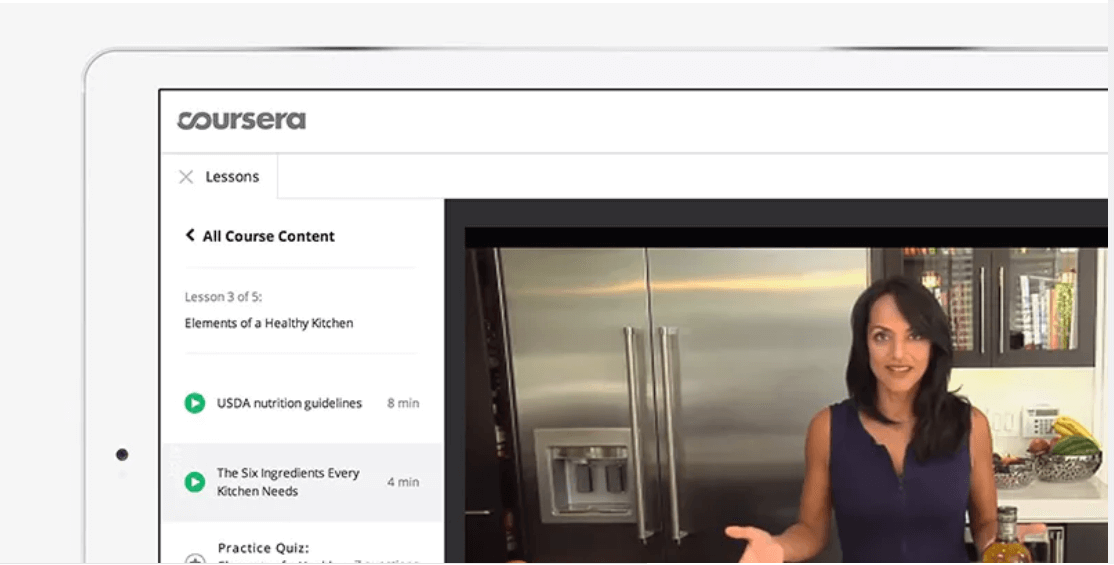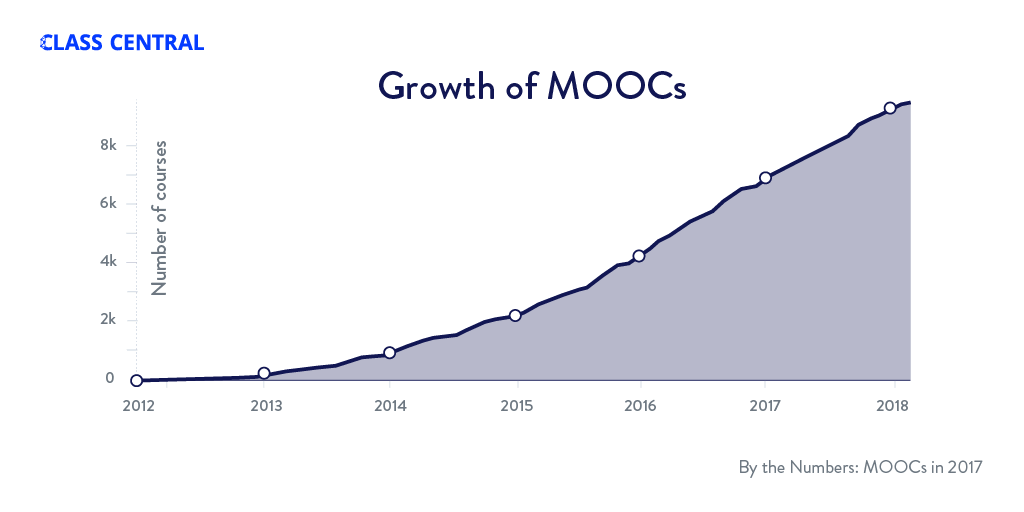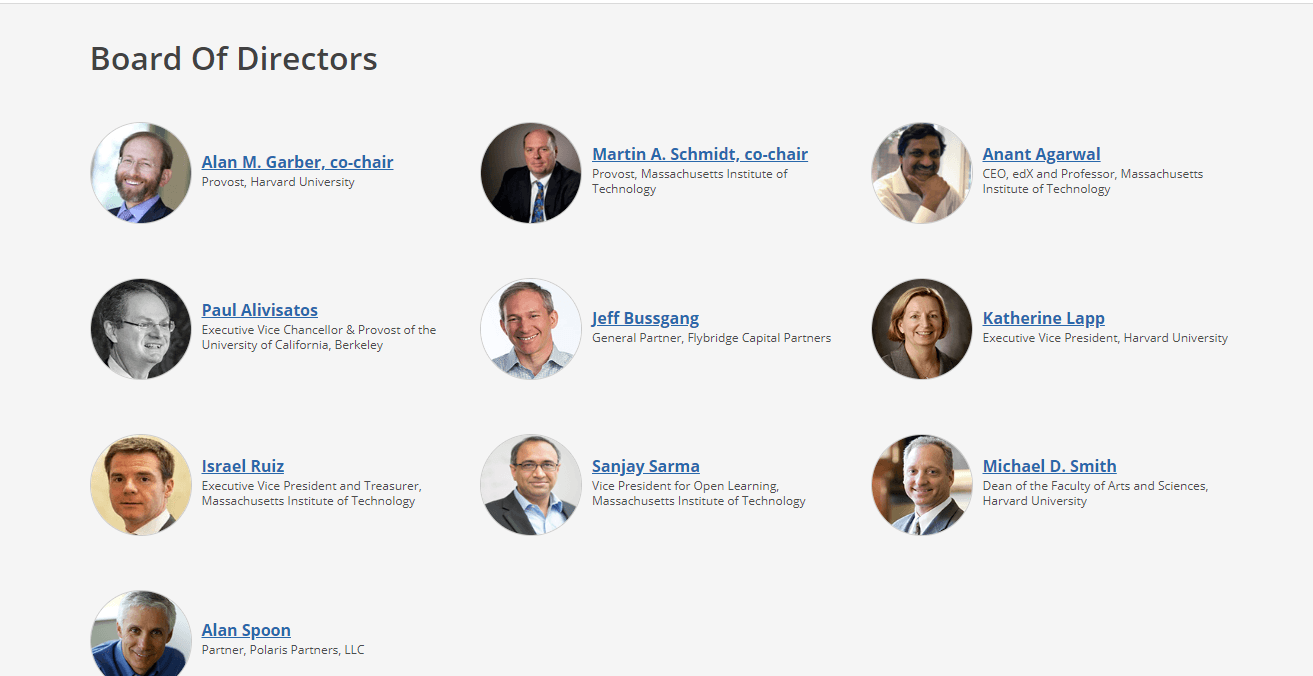You are able to enter the stiff competitive world of MOOC platforms and potentially compete with Coursera, Udacity and other major platforms. We will describe the basic and advanced features of modern MOOC platforms, figure out the best current representatives on the market and compare them as well. We will also try to figure out what would it take to build such a platform as a custom software solution that can be outsourced to a elearning software company, like Belitsoft International LLC
Basic MOOC Features
We produce all kinds of E-Learning software in Belitsoft. Contact us here. Or take a look at our e-learning software development portfolio first.
Let’s list the most common components of the leading MOOCs on the market:
- Video materials
- Reading materials
- Integrated activities
- Course forums and chats
- Sectional organization
- Test sections
- Final test examination (sometimes in the form of a project)
Let us stop at each of this components realization for a better-detailed view.
Video materials
These are actually the lectures mentioned earlier but adapted for the course. The tutor records series of lectures, they get dissected into smaller parts. Usually, videos are 2-10 minutes long.
 Source: coursera.org
Source: coursera.org
It is fairly easy to integrate the media from other sources, including Youtube into a course.
Reading materials
As far as we are concerned, old textbooks are there for a reason. Certainly, with MOOCs, you won’t have to visit some dusty libraries. However, ebooks and certain PDF-transcript of video lectures are usually recommended, or even required for the successful course completion.
Integrated activities
Sometimes truck drivers turn-on their inner “autopilots” and get asleep while they are driving. The repercussions of these might be horrible, as you could guess.
While courses are usually not as monotonous as long-distance driving, there can also be some boring parts in them.
In order to not get asleep (or go auto-pilot) trying to absorb knowledge, students should get little challenges along the way.
Short breaks in the time of lectures should be filled with quizzes or a very small project. For instance, it’s only fair to ask you some questions that were just covered by the tutor, or make you write a line or two of the code that was previously described in the video.
Also, the learner might be redirected to an outside source of information to dig out more on a certain topic on their own. This is a good changeup for interrupting the routine actions and making students get some experience.
Sectional organization
MOOC completion usually takes several weeks, so it’s only logical to organize the series of study materials into certain sections, completing of which would take a week.
Sometimes the course is scheduled, so many students go through it simultaneously, and the current phase (e.g. Week 4) is identical for all the enrolled people. The other courses have “learn-at-own-pace” structure, but they also have to be organized anyway.
Sectional organization of the course serves as the additional guideline for the student to complete the course effectively and in time.
Test sections
There is nothing special in those sections but they are a necessity that deserves to be mentioned separately.
In order to reinforce the studied material of the section, the course is completed with tests. Sometimes it comes in a form of a project, in other cases tests consist of multiple choice questions, or come in some other forms.
Final test examination
Upon the completion of MOOC, final examination comes on stage to give a definite conclusion of whether the young acolyte has completed the course or not. In most cases, there are no grades, just pass/fail system is in action.
After completing the course one usually gets a certificate, which is sometimes more valuable than a college diploma, but more on that in the next section.
MOOC Graduate Degrees
If MOOCs are almost like college, why can’t it be monetized like college? Well, maybe with some sort of a discount or something like that to not scare online students off.
Turns out, graduates of MOOC programs can be awarded Masters degree already. Udacity has teamed up with Georgia Tech and AT&T to offer an online Master´s degree in Computer Science. 6,000 students enrolled for the course.
As the competition is tough between MOOC platforms, Coursera (and the University of Illinois) have announced their own MBA program that was able to attract over 800 students for enrollment.
edX and Georgia Tech also started Online Masters in Analytics program, and if we count the potential revenue to just these three degrees program, it is already over $65 million (based on the number of enrolled students and tuition fees).
There are plenty of plans in that direction.
For now, we can claim with the certainty that Coursera alone plans to launch at least 15-20 such programs by the end of 2019.
Seems like MOOC platform owners found a nice way to boost the revenue, and who could blame them?
Comparing TOP MOOC Platforms in Brief
Reviews.com have made a complete guide on MOOC platforms comparison. Certainly, they made it for the users to have a comparative analysis and choose the one to pass certain courses.
 Source: diygenius.com
Source: diygenius.com
However, the article could be useful for those who are thinking about creating the new MOOC that could have the place in this highly competitive market niche.
Have a look at core metrics and sub-metrics.
Core metrics include:
- Credentialing
- Course Diversity
- Course Features
- Social Features
- Partner Institutions
Based on the top performers in each category, we would try to draw the picture of how a perfect new MOOC would look like.
Credentialing
Credentialing is an important part of passing the course. Ideally, the platform has to offer a verified certificate for all courses free of charge. EdX and Coursera in certain cases charge the students for the certificates.
This might be a valid source of revenue, but definitely will be noticed by the students.
It also would be nice to offer some courses with the ability to gain college credits (according to Reviews.com, Coursera gains a lot here and some platforms like FutureLearn and iversity get 0 points).
Also, the more specializations and accredited degrees can be offered by the platform, the better for them. These are valid sub-metrics.
Course Diversity
Obviously, the big number of offered courses would never hurt. If you have just a couple of courses in the beginning, it would be very difficult to take a good start.
Anyway, even if in the beginning the number of courses is small, you should provide users with decent search filters.
Grouping the courses into categories would allow users to select what they need after your platform will scale to a massive course collection.
Most of the platforms offer both self-paced and scheduled courses. The exceptions among the top-6 platforms in the industry are FutureLearn (scheduled courses only) and Cognitive Class (self-paced courses only).
Course Features
Coursera, edX, Udacity, and Iversity all offer both automated and human grading. This is sort of an industry standard for all the top platforms. You should also care about multi-language courses. A good practice is adding subtitles in 5-6 languages to your courses.
Go mobile! This should go without saying. If you only have a desktop version, people will gladly choose the course they would enjoy on the tablet or mobile phone elsewhere.
Social Features
Most of the top MOOC platform have social profiles. Some of them even offer the reputation system for contributors. Also, don’t hesitate to allow all sorts of collaborative activities for students. People enjoy working in groups and socializing while passing the course.
Partner Institutions
The leader in terms of the biggest number of partner institutions and courses is Coursera. This platform also has all the top colleges in their collections - there are courses from MIT and Harvard professors. It wouldn’t be easy to compete with this platform.
However, big names are not what makes the platform successful. If you could land professors from lesser known universities and they still provide your courses with valuable information, why not do it?
Current State of MOOC Platforms in Numbers
 Source: class-central.com
Source: class-central.com
The biggest worldwide operating MOOCs are Coursera (with 30 million students), non-profit MOOC edX (14 million) and Udacity (8 million students).
There is also a Chinese MOOC XuetangX with 9.3 students.
Over 800 universities have launched at least one MOOC.
MOOC providers are also partnering with tech companies for courses launch. The total number of MOOCs out there is at 9,400 by the end of 2017.
 Source: class-central.com
Source: class-central.com
The numbers are keep growing exponentially. Should you jump on this bandwagon?
Why Wouldn’t Everyone Get Own MOOC Platform?
Why wouldn’t everyone get themselves their own MOOC platform? This doesn’t seem like an overly big task for software developers to build and maintain. At least from the technical point of view, it wouldn’t be a more difficult task than building a learning app like Duolingo.
A medium-sized software company would gladly accept your order to build such a custom decision.
The main obstacle is getting relevant courses from big and famous colleges. Just have a look at the board of directors of EdX - Harvard and MIT professors. It could be hard to persuade them to start a course on the beginner’s MOOC platform.
 Source: open.edx.org
Source: open.edx.org
However, if you have sources of creating some quality courses, this could be a very profitable goldmine for you to dig in.
Rate this article
Recommended posts
Portfolio
Our Clients' Feedback






















.png)
.jpg)
.jpg)














Belitsoft has been the driving force behind several of our software development projects within the last few years. This company demonstrates high professionalism in their work approach. They have continuously proved to be ready to go the extra mile. We are very happy with Belitsoft, and in a position to strongly recommend them for software development and support as a most reliable and fully transparent partner focused on long term business relationships.
Global Head of Commercial Development L&D at Technicolor